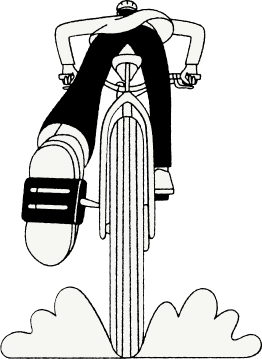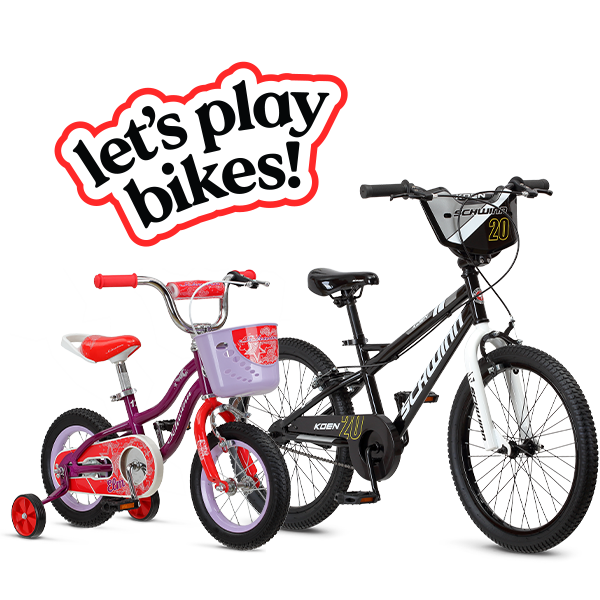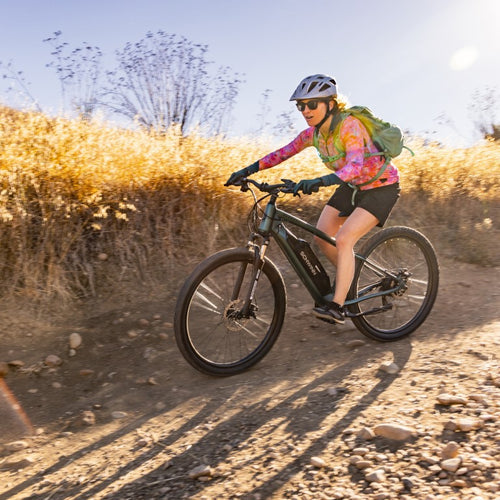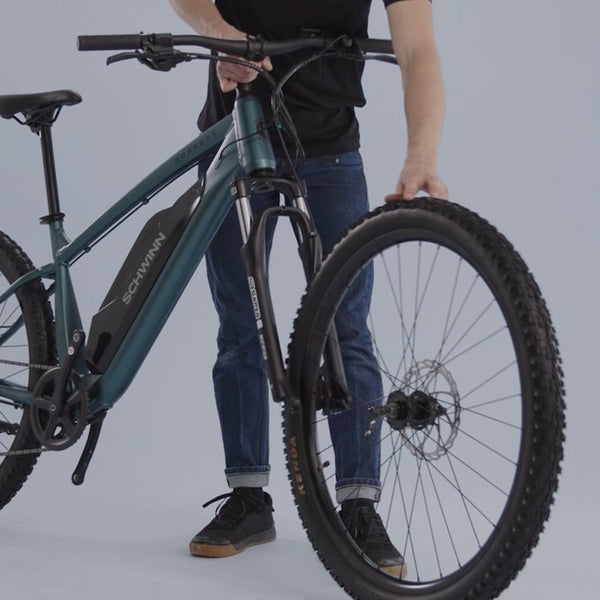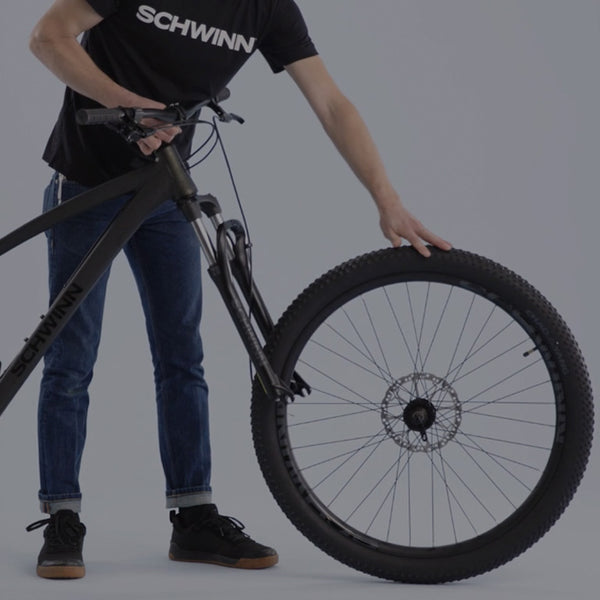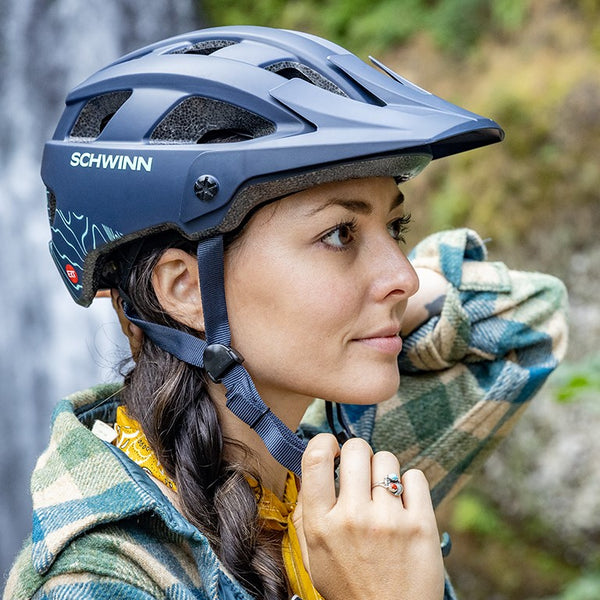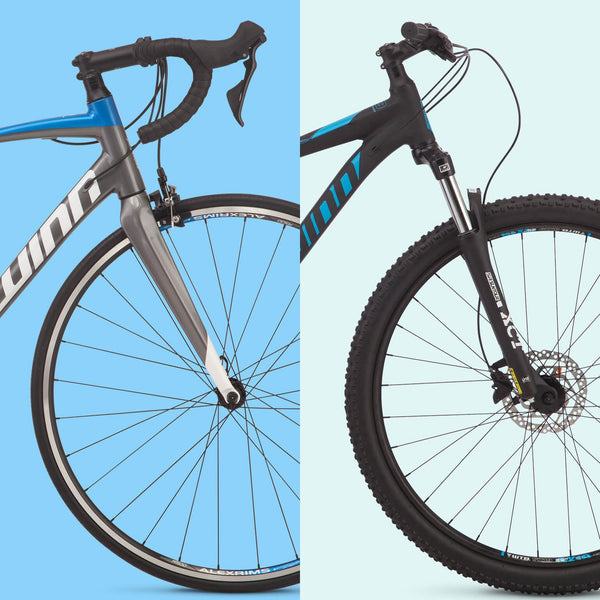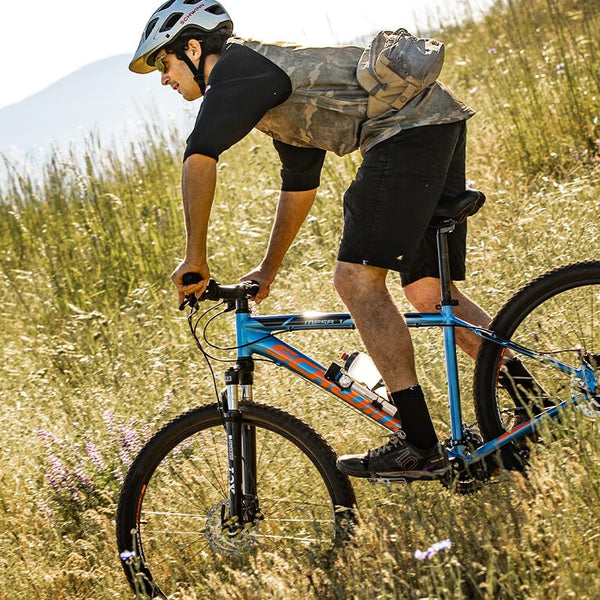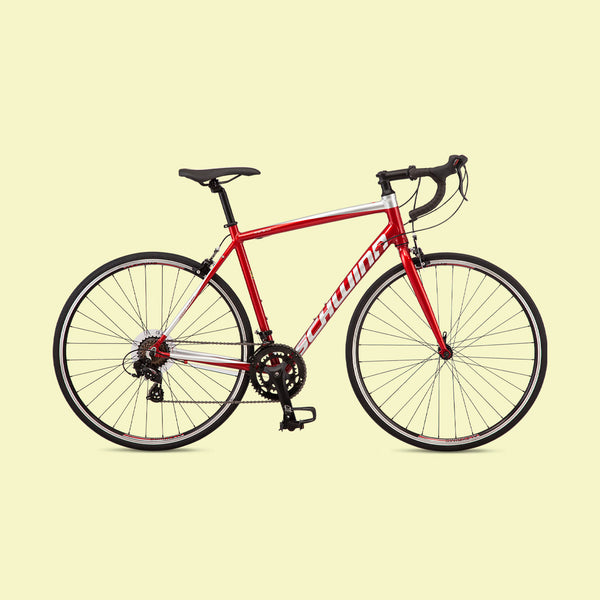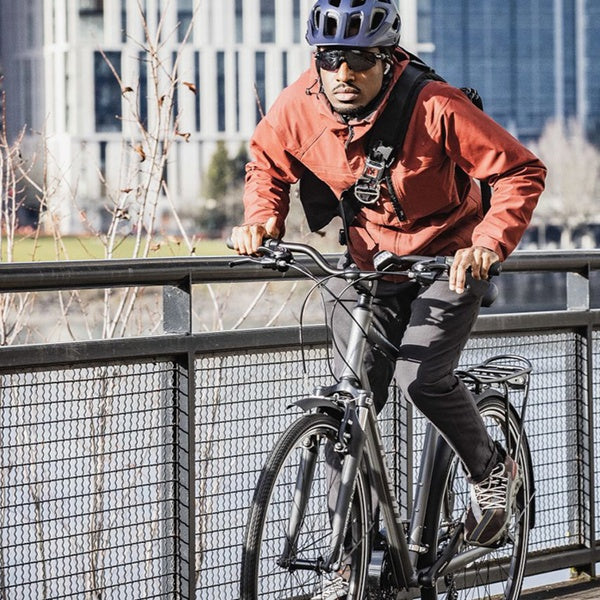
Road bikes are used on paved trails and roads; hence the name. They are light in weight and great for commuting and riding long distances for fitness.
Handlebars
Road bikes come in two distinct handlebar styles, drop-bar and flat-bar. Drop-bars are much more common.
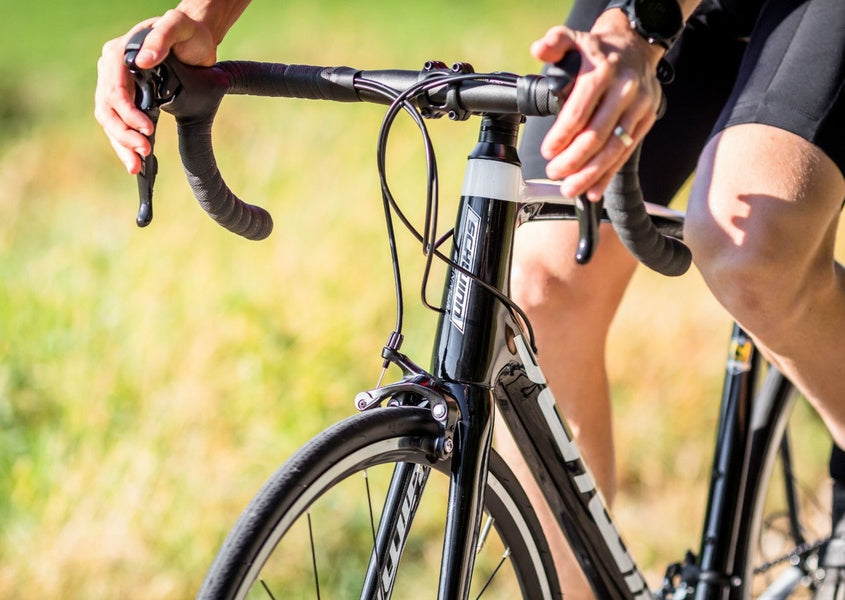
- Drop-bar – This type of handlebar creates a more aerodynamic shape with the rider’s body. This means you will be able to go faster since the transference of energy forward becomes more efficient. There are also more places to put your hands creating numerous riding positions. One thing to consider with drop-bars is the position of your back. If you are a less flexible rider, stretching when you're off of the bike can help ease any discomfort.
- Flat-bar – Flat-bar handlebars create more of an upright riding position. While this may be less efficient riding you will be able to see ahead of you more clearly and less pressure on your back.
Materials
Road bikes are generally made up of two types of materials, aluminum, and carbon.
- Aluminum – Aluminum frames tend to be less expensive than carbon fiber frames. Found on bikes like the Fastback AL 105 ($1299.99), this material is both light and stiff and provides a smooth ride. An aluminum frame is a bit heavier than carbon.
- Carbon Fiber – A carbon frame like the Fastback Carbon 105 ($1999.99) road bike is quite light, comfortable, and provides a ride with significantly fewer vibrations than an aluminum frame. However, carbon frames tend to be more expensive.
In general, an aluminum frame is ideal for a beginner road cyclist, or someone who doesn’t care about cutting time off their miles and just wants a good ride for fitness and fun. Road cyclists who are seriously training for a competition or are concerned about their speed would be best suited for a carbon fiber frame.
Pedals
There are several types of pedals that you can use while on a road bike. You should choose the pedals that provide you the most comfort and efficiency possible for the best riding experience.
- Platform Pedals – These pedals are the most commonly recognized pedals across categories. Their flat surface provides an even surface for your foot to rest on. These pedals can be used with a variety of shoes and are the easiest to remove your foot from. Platform pedals are ideal for someone who is just starting out on a road bike or is uncomfortable with their foot being restrained.
- Caged Pedals – Another type of pedal commonly seen with road bikes is a pedal with a toe cage that can be adjusted to your feet. This cage encases the front of your foot to allow you to complete your pedal stroke with an upward pull. The ability to both push and pull on your pedal stroke increases the overall efficiency of each stroke. For road cyclists who are looking to migrate toward clipless pedals, this is a great, cost-efficient way to get used to the feeling of having to remove your foot from the pedal when you stop.
- Clipless Pedals – Road cyclists may be most known for these pedals where you actually “clip in”. While there are many different kinds of clipless pedals, this form of pedal, overall, provides the most efficiency to the power of each pedal stroke. This pedal works by connecting a special bike shoe that has a cleat on the bottom directly into the clips of the clipless pedal. Clipless pedals do take some work to master, but after a while, it becomes second nature and your ride will be that more efficient because of it. This type of pedal is great for the road cyclist who goes on long rides and is looking to increase their efficiency.
Wheels
Often times you will see road bike tires labeled something like; 700x25. The first number (in this case, 700) indicates the diameter of the tire in millimeters and is fairly standard in the category. The second number (25) shows the width of the actual rubber tire in millimeters and is more likely to vary across individual bikes in the category.
- 25mm – This tire width offers the smoothest ride, most comfort and stability for road tires. This tire size is great for beginners who are looking to gain comfort on their road bike, commuters who want to have better roll resistance on their ride.
- 23mm – This tire width is the most commonly seen width on road bikes today. These wheels still offer a degree of stability but are also lightweight and more aerodynamic than the wider range of tire sizes. These wheels are great for cyclists who want to increase their speed.
Brakes
In the past road bikes were almost uniformly designed to have just one form of brakes, and those were rim brakes. Since then, disc brakes, which were originally seen in the mountain biking category, have made their way into the road scene, creating a great debate among road cyclists.
- Rim brakes – These brakes are the traditional style found on road bikes and can work very well when used correctly. They do not need constant adjustment and the brake pads, when needed, are reasonable in price. Rim brakes may become less efficient in wet, dirty conditions, but these brakes are still the most common in road bikes today. They're a great option for anyone entering or already involved in road cycling.
-
Disc brakes – These brakes offer incredible, modulated stopping power in all conditions. This means you can control how much stopping power you are giving the brake easily; when you need to stop it is assured and no matter what gets on your brakes or if they get wet, they should work. Disc brakes also last a long time.
On rare occasions, these brakes can become damaged if they become contaminated with hydraulic oil and can become less useful if bent, but these conditions can be remedied. While disc brakes still have not been adopted into pro-cycling, they are a great option for commuters or cyclists training in all conditions. Check out the Paramount Force to see disc brakes in action.
Cranksets and Chainrings
Road bikes have several options when it comes to the crankset, chainrings, and gearing of the bike.
- Crankset - The crankset is a component on the bicycle frame that is part of the drivetrain. It takes the power generated from the pedals and uses it to drive the chain which rotates the rear wheel.
- Chainring – Large rings on the bike which the chain attaches to in order to transfer energy, driven by the pedal and crankset, to the wheel. The chainring can consist of one or more sprockets.
- Cassette – The cassette is the stack of gears located on your back wheel. When you shift the chain will move up and down the cassette to a new gear.

The different types of cranksets found on road bikes vary based on the number and size of chainrings found on the bike.
- Triple crankset – The triple crankset is the most common beginner road bike configuration. It has 3 chainrings and usually has 9-speeds to offer the rider 27 gears. This allows the rider to have a wide range of gears.
- Double crankset – This crankset has 2 chainrings and a 10-speed cassette to offer the rider 20 gears. It weighs less than a triple, but still offers a large gear range. The double crankset also helps reduce drag on the derailleur that can sometimes be found in a triple crankset. This is a great option for strong cyclists, especially those training for a race, time trial or triathlon.
- Compact crankset – A compact crankset has smaller chainrings with fewer teeth than a double or triple crankset. This means that there will be a lower gear ratio, but hills will be easier to climb. This crankset is most commonly seen in road bikes.
Friendly Tip: A great addition to any road cyclist’s wardrobe is a pair of bike shorts. They may feel funny off the bike, but trust, us your body will thank you!
Shop our full range of Road Bikes!
